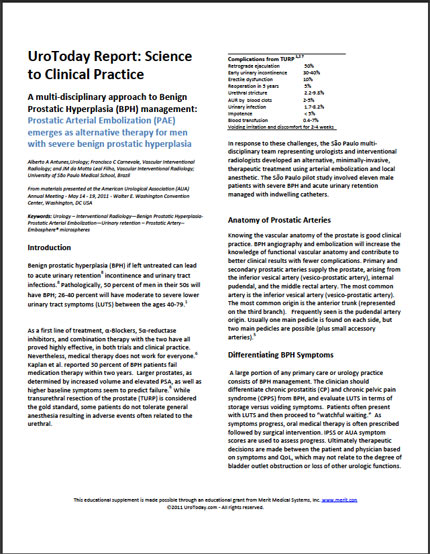WASHINGTON, DC USA (UroToday.com) - Written by Alberto A. Antunes, Urology; Francisco C. Carnevale, Vascular Interventional Radiology; and J. M. da Motta Leal Filho, Vascular Interventional Radiology; University of São Paulo Medical School, Brazil
Benign prostatic hyperplasia (BPH) if left untreated can lead to acute urinary retention8 incontinence and urinary tract infections.8 Pathologically, 50 percent of men in their 50s will have BPH; 26-40 percent will have moderate to severe lower urinary tract symptoms (LUTS) between the ages 40-79.1
As a first line of treatment, α-Blockers, 5α-reductase inhibitors, and combination therapy with the two have all proved highly effective, in both trials and clinical practice. Nevertheless, medical therapy does not work for everyone.6 Kaplan et al. reported 30 percent of BPH patients fail medication therapy within two years. Larger prostates, as determined by increased volume and elevated PSA, as well as higher baseline symptoms seem to predict failure.6 While transurethral resection of the prostate (TURP) is considered the gold standard, some patients do not tolerate general anesthesia resulting in adverse events often related to the urethral...

View or save the monograph as a .pdf file
From materials presented at the American Urological Association (AUA) Annual Meeting - May 14 - 19, 2011 - Walter E. Washington Convention Center, Washington, DC USA

View Full AUA 2011 Meeting Coverage




